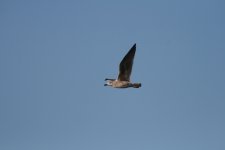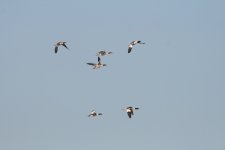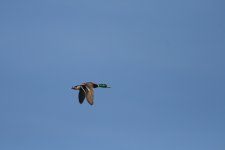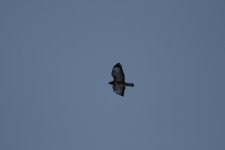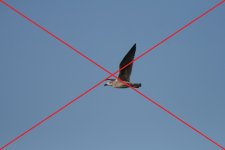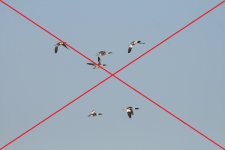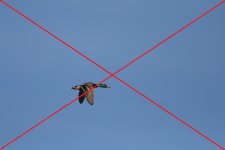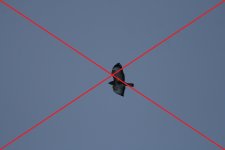Paul, thanks for posting some examples. EXIF is an integral part of the image data when you capture an image. It includes all sorts of information like the camera model, lens, shutter speed, aperture, ISO and a host of other stuff including the focus points used and all sorts of other settings. When you edit/save images sometimes the data is kept intact, sometimes some goes missing, and sometimes everything gets wiped clean. Having EXIF data available can often make diagnosis of a problem a lot easier.
In your case I think we can get by without. I think the problem you are facing is likely to be a classic problem that so many of us face. The camera is part of the problem, because it does not make things easy and therefore requires improved skills/abilities from the photographer. A more advanced camera can make it easier to get the shot.
Assuming the 400D has AF attributes in common with the xxD series of cameras there are two weaknesses common to all of them....
1. There is a large gap between the centre AF point and the outer AF points - a sort of no-man's land. If your subject is small in the frame, as these examples all are, you cannot use "all points" because if the subject drifts off the centre point it will get lost by the AF system before it reaches an outer point. That means you are stuck using centre point only. That brings me on to the second weakness....
2. Certainly in the xxD bodies, and I assume the xxxD bodies, if the active AF point loses track of the subject (i.e. your aim is poor) then it will very quickly go searching to find where the subject is, and will rack focus back and forth to find it. This means you only have to slip off the subject briefly and your focus will go to pot. If you get the AF point back onto the bird quickly then the camera may recover quickly, but if you squeezed off a shot whilst off the bird the probability is that the shot will be OOF. This is where fast reactions and bump focusing can help. I use back button focusing on my cameras, rather than focusing with the shutter button. If I lose aim on the bird then I very quickly release the AF button, hopefully before the camera has a chance to become defocused. Once I have the AF point back over the bird I can resume focusing once more. Meanwhile, I can retain a half press on the shutter button in order to keep the IS spinning away, assuming I am using IS.
The benefit that comes with the 5D and 5D2 (not usually regarded as good birding cameras) is that they have a series of invisible AF assist points surrounding the centre point. These can be enabled or disabled, but if enabled will effectively increase the size of your centre point and make it easier to keep focus on the bird, even if your aim is a bit wobbly. This should work well for birds against blue sky. With busy backgrounds the results are not so cut and dried.
With cameras like the 7D and 1 series bodies the advances in AF go even further. Not only do you have the benefit of optional assist points, but you also have the ability to delay how quickly the camera gets fed up and goes searching for its subject, if you lose aim on the bird. This can be a life saver, especially if your reactions are not so quick.
So, with your 400D you don't have it easy. What's worse, the AF is probably not as snappy as the better specified cameras, so if/when you do lose your target it might take a bit longer to bring it back into sharp focus again. All of this places greater demands on your own skills.
If we look at the images you posted, and find the centre of each image, it appears that in two of the images your AF point was not actually over the subject, and even allowing a little latitude for the size of the AF point, I think you have missed perfect focus on the shots. Certainly that is the case for the small flock. In cases where you have a busy background, such as woods and trees, the challenge becomes even harder.
EDIT : I've just seen Roy's post. I was so focused on "focus" that I missed exposure completely, or chose to ignore it. Roy has picked up on that, so between us I think you have some good advice to work with.

p.s. I'm a glutton for manual exposure. I hate autoexposure because usually it is a pain in the butt, especially for birding.
p.p.s. The quantity, quality and direction of light makes a big difference as well. I like bright conditions, and I like my light source somewhere behind me. However, the sun's height in the sky can make a big difference to results too, affecting exposure considerations as well as the actual appearance of the image. I prefer my sun to be coming in from a lowish angle, thus providing side lighting and perhaps lighting the underside of the bird as much as the top side. The closer to summer we get, and the closer to midday you shoot, the higher the sun gets, leading to strong top lighting and strong shadows underneath. I find that a lower sun makes for much more successful captures. Of course, top lighting is fine, if your bird presents itself at the right angle, but those angles are harder to come by and may limit the hit rate. In your examples the lighting for the ducks looks good, for the gull it looks OK, although I might prefer more light under the wing. For the buzzard it's really just not there. The exposure is one thing, but your bird is not lit. You have the shadow side.




